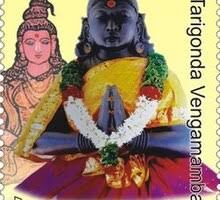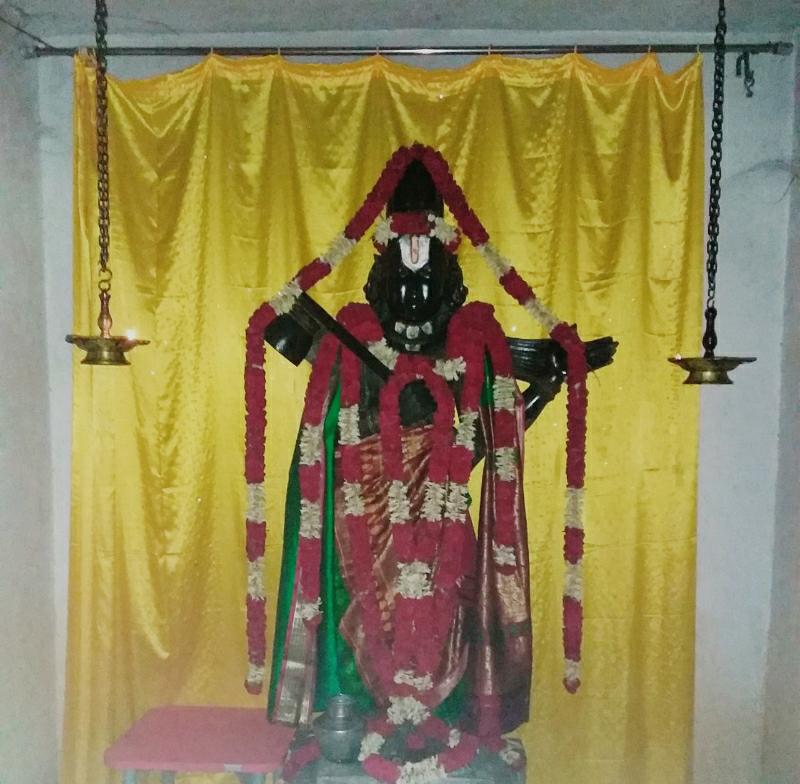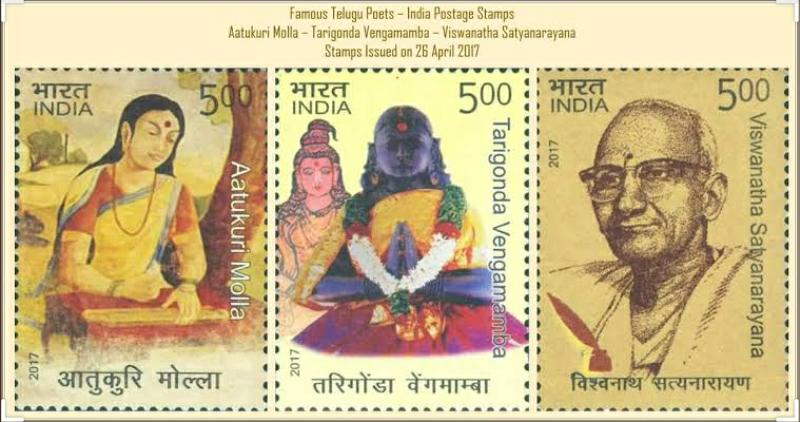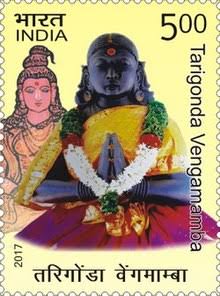Table of Contents
Brief Biography of Matrusri Tarigonda Vengamamba
Aesthetics in India has produced a vast array of human experiences, thoughts, values, beliefs, and pleasures. From the extreme north to the far south, Indian aesthetics and traditions are the oldest and largest. Indian aesthetic notions eventually spanned disciplines and became useful to practically all researchers and scholars in the arts and literature. Indian Aesthetics grew in importance over time, not only in literature and the humanities, but also in the performing arts, comparative studies, and the social sciences. The major objective of this article is to present Tarigonda Vengamamba’s composition from the perspective of devotional aesthetics.
Tarigonda Vengamamba, also known as Matrusri Tarigonda Vengamamba, was a poet and ardent devotee of Lord Venkateswara in the 18th century. Vengamamba lived from April 20, 1730, to August 21, 1817. She wrote a lot of poetry and songs. Vengamamba was born around 1730 in the Tarikonda village of Andhra Pradesh into a family of Niyogi Brahmins belonging to Nandavarika’s sect. Krishnayamatya was Vengamamba’s father, and Mangamamba was her mother. Vengamamba had been a devout follower of Lord Venkateswara since childhood, and the locals thought she was demented because of her devotion. Vengamamba married at a young age and later lost her husband Venkatachalapathi, leaving her as a child widow. She continued to dress like a married woman despite her refusal to accept anybody other than the Lord as her husband. She became a yogini after studying yoga sciences under the direction of Acharya Subrahmnayudu. As a result of the resentment Vengamamba received from the local priest in Tarikonda, she relocated to Tirumala.

The story behind the Matrusri Tarigonda Vengamamba
Vengamamba was greeted by the priest and Annamayya’s descendants, all of whom had heard of her devotion before her arrival. Lord Venkateswara is said to have been moved by Vengamamba’s devotion and permitted her to enter the temple after temple hours to hear her poems and singing. Vengamamba recited poems and performed Lord Venkateswara’s ‘harati’ every night for a price of pearls. The priests’ research led them to Vengamamba when they noticed pearls in the sanctum sanctorum for a while. Their punishment was to send her to a cave in Tumburakonda, 15 kilometers away from Tirumala. According to folklore, Lord Venkateswara provided a secret path connecting the cave and the temple, which Vengamamba used to continue her religious duty. For the next six years, penance and night-time harati were practiced. The priests eventually realized their folly and appreciated Vengamamba’s passion and dedication, asking her to return.
The notable compositions of Matrusri Tarigonda Vengamamba (devotional works)

Vengamamba was allowed to participate in ‘Ekanta Seva’ and take Lord Venkateswara’s final ‘harati’ upon his return. The area surrounding her Brindavan (Samadhi) was later transformed into a school, with the Brindavan remaining open for pilgrims to worship in the schoolyard. Tarikonda Nrusimha Satakam was Vengamamba’s first poem, followed by Nrusimha Vilasa Katha, Siva Natakam, and Balakrishna Natakam as Yakshaganam, and Rajayogamrutha Saram, a Dwipada Kavya. Vengamamba was in Tarikonda when these improvements were completed. Vengamamba composed Vishnu Parijatham, Chenchu Natakam, Rukmini Natakam, Jala Krida Vilasam, and Mukthi Kanthi Vilasam (all Yaksha Ganams) when she returned to Tirumala from Tumburakona caves, Gopi Natakam (Golla Kalapam-Yakshaganam), Rama Parinayam, Sri Bhagavatham, Sri Krishna Manjari (Padyakruthi). Vengamamba’s harati has been incorporated into the ‘Ekanta Seva’ done to Lord Venkateswara each night since the Lord recognized her devotion. Vengamamba’s ‘harati’ is named after a descendant of Vengamamba who pays a fee of pearls.
The last kainkaryam (ritual) done after Lord Venkateswara’s ‘Ekantha Seva’ in Tirumala, ‘Mutyala Harathi,’ is symbolic of the Lord’s affection for His followers. The rite was initiated by Tarigonda Vengamamba, a saint-poetess, and has been followed by Annamacharya’s ‘Lalipata’. Performing both rites at the Lord’s ‘Ekantha Seva’ means that both devotees are equal in His eyes. It was also known among devotees as ‘Tallapaka vari Lali, Tarigondavari Harathi.’ She wrote various literary works about Lord Venkateswara and Lord Narasimha, including several Yakshaganams.
Vengamamba, on the other hand, who considers Lord Venkateswara to be her spouse, refused to give up the emblems of a married woman (Punya stree). She later received Guropadesam from Subramanya Sastri, a prominent philosopher of the day. It was reported in Venkatachala Mahatyam that Vengamamba experienced balls of letters from heaven one day while performing yoga. She began writing poems after that, with the assistance of her Guru.
Vengamamba crossed the dense forest alone to Tirumala, despite many hardships. The Mahant, who was in charge of Tirumala at the time, greeted her warmly because he had heard of her as a powerful devotee. Vengamamba was also assisted in establishing down in Tirumala by Annamacharya’s descendants. An incident at Tirumala forced her to flee to Tumburakona in the Seshachalam highlands, where she performed penance in a cave for six years. Tarigonda Vengamamba Gavi was the name given to it later. Vengamamba returned to Tirumala at the Mahant’s request and continued her literary activities. Sri Bhagavatham Tatva Keerthanalu, Vashista Ramayanam (Dwipada), Sri Venkataachala Mahatyam (Padya Prabhandam), Ashtanga Yoga and Saram (Padyakruthi) are some of other notable works of Vengamamba. Consequently, her works do not receive the reverence they deserve today.
Significance of Vengamamba ‘Mutyala Harathi’
One of the Vengamamba’s compositions, which is a long piece known as ‘Mutyala Harathi,’ can be concisely stated as follows.
“Hail welfare, and may it be joyous welfare every day.”
All hail welfare, and may you have a joyful welfare day every day.
To Him who dwells on the Pannagadri hill,
To Him who dispels the darkness of sin, To that God, and to our loving Alamelu Mangamma, who is ever-present with Him.”
“Hail welfare, and may it be joyous welfare every day.”
All hail welfare, and may you have a joyful welfare day every day.
All hail welfare, and may every day be a happy welfare day for you.
To the supreme God, who has earned the designation of One who bestows blessings on all those who take refuge in Him.
To Alamelu Manga, who keeps reminding him that he should forget this title.
To Him Who resides in the Annada Nilayam at all times and protects the hapless devotees, and to Alamelu Manga, who honors her Consort by presenting plentiful sacrifices to Him.”
“I must bestow boons on humans,” He, the soul of the entire Universe, asserts.
And He reveals Vaikuntah in His palms to the Ocean’s daughter, who resides on her consort’s chest. She claims it is Her job to distribute all types of wealth to the followers.
To Him who deftly calls devotees to bring offerings over and over again and accepts them, and to the wonderful Mother who prepares the food and serves the devotees diligently and continually.
Also to all the lovely and unexpected Mandapas and Mada alleys that surround the temple and sacred waters.”
“To the temples’ golden heights and majestic Gopuras and Prakaras.”
To a plethora of benevolent choultries, as well as magnificent gardens full of flowers and fruits
To the lovely treasuries, storehouses, and beautiful kitchens.
To Vahanas such as Garuda, umbrellas, and Makara thrones (crocodile-shaped festoons), to numerous Dwajas (banners), various musical instruments, and the greatest Kalyana Vedikas.
Chief instruments such as the holy conch and Chakra, divine jewelry encrusted with jewels, and a collection of the sacred garment fabric.”
“To the divine auspicious deity
With limbs like sacred hands and feet etc.
To the auspicious qualities like
Sujana (wisdom) limitless prowess and majesty.
To all gods around and also servants
Doing service with enthusiasm.
Valagonia sakala parivara devatalakunu,
Celagi panulonarincu sevakulaku”.
“Alaraga bramhostsavadhulai santatamu
Valanoppu nityotsavambulakunu,
Polupondu visvaprabhutva mulambunaku,
Naluvondu varavimananbulakunu.
Araya Tarigonda Narahari yagucu nandariki
Varamulosage Srinivasunakunu,
Muriyucunu visvotiomukhu nittu bhariyinci
Sirula velayucunundu Sesadriki.
Jaya Mangalam Nitya Subha Mangalam
Jaya Mangalam Nitya Subha Mangalam.”
Conclusion
Therefore the word “aesthetics” belongs to the field of the science and philosophy of fine art. Fine art can present the “Absolute” in sensuous garb and aesthetic relation. Indian Aesthetics is primarily concerned with three arts – poetry, music, and architecture – however, sculpture and painting are also studied under aesthetic theories. Poetry is the highest form of literature. Indian art is the art of signs and symbols. Consequently, it communicates super-sensuous truths or forms. Hence, when symbols of art lack the attribute of likeness, it leads to fragility. Alternatively, these symbols raise poetry to the mount of aesthetic pleasure. Hence such defining and aesthetics of devotion can be seen in Tarigonda Vengamamba’s compositions and writings in praise of the Lord Sri Venkateswara and she became a well–renowned woman poet and writer during the eighteenth century who took inspiration from the ideal saint and composer Annamacharya respectively.
Read the Previous Article on Andal by clicking here.





